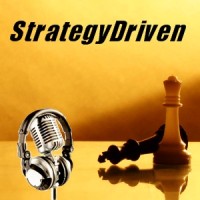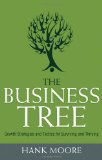The Big Picture of Business: Why a Company Would Improve? The Art of Learning From Failure to Get Better.
Success is just in front of our faces. Yet, we often fail to see it coming. Too many companies live with their heads in the sand. Many go down into defeat because it was never on their radar to change.
A colleague recently complained about her corporation: “Things are much the same at this company, and I don’t see much changing unless leadership does.”
The answer is that companies need not roll over and accept less than the best. And yes, it takes courage to get management unstuck in their ways. Ninety-two (92) percent of all problems in organizations stem from poor management decisions.
The Biggest Mistakes Which Many of Us Have Made
Abilities, Talents
- Making the same mistakes more than twice, without studying the mitigating factors.
- Taking incidents out of context and mis-diagnosing situations.
- Rationalizing occurrences, after the fact.
- Appearing self-contained, therefore precluding others from wanting to help me.
- Inability to cultivate other people’s support of me at the times that I needed it most.
Resources
- Attempting projects without the proper resources to do the job well.
- Not knowing people with sufficient pull and power. Thinking that friends would help introduce me or help network to key influentials.
- Failure to effective networking techniques early enough in my career path.
- Inability to finely develop the powers of people participating in the networking process.
Other People
- Accepting people at their words without questioning.
- Showing proper respect to other people and assuming that they would show or were capable of showing comparable respect to others.
- Doing favors for others without asking anything in return… if I expected quid pro quo at a later time. Not telling people what I wanted and then being disappointed that they did not read minds or deliver favors of their own volition.
- Befriending people who were too needy… always taking without offering to reciprocate. Continuing to feed their needs… a one-way relationship.
- Picking the wrong causes to champion at the wrong times and with insufficient resources.
- Working with the false assumption that people want and need comparable things. Incorrectly assuming that all would pursue their agendas fairly. A better understanding of personality types, human motivations and behavioral factors would have provided insight to handle situations on a customized basis.
- Offering highly creative ideas and brain power to those who could not grasp their brilliance… especially to those who were fishing for free ideas they could then market as their own.
Circumstances Beyond Our Control
- Working with equipment, resources and people from a source without my standards of quality control… trying to make the best of bad situations.
- Changing trends, upon which I could not capitalize but which others could.
Mis-Calculations
- Incorrectly estimating the time and resources necessary to do something well.
- Getting blindsided because I did not do enough research.
- Failure to plan sufficiently ahead, at the right times.
- Setting sights too low. Not thinking big enough.
Timing
- Offering advice before it was solicited.
- Feeling pressured to offer solutions before diagnosing situations properly.
- Not thinking of enough angles and possibilities… sooner.
Marketplace-External Factors
- Not reading the opportunities soon enough.
- Not being able to spot, create or capitalize upon emerging trends at their beginnings.
Stages of Mistakes
- Discovering errors (sensory-motor, sounds-language and logical selection).
- Recognizing mistakes.
- Separating successful elements from failures we do not need to duplicate.
- Learning from mistakes.
- Learning from success.
- Mentoring yourself and others toward a higher stream of knowledge.
- The wisdom that comes from making mistakes, comprehending their outcomes, and developing a knowledge base to achieve success.
Gradations of Failing
- Not seeing the warning signs.
- Distinguishing among friends, enemies and the majority group, those who could care less about you but who will tap whatever resources available to get their needs met.
- Never seeing victories as quite enough.
- Feeling that someone else – everyone else – wins when you fail.
- Repeating self-defeating behaviors.
- Holding unrealistic views.
- Thinking that you never fail… that failing is for other people and organizations.
Why We Must Fail… in Order to Succeed
Learning the stumbling blocks of failure prepares one to attain true success. Fear is the biggest contributor to failure, and it can be a motivator for success. You cannot make problems go away, simply by ignoring that they exist.
Everybody fails at things for which they are not suited. The process of learning what one is best suited to do is not a failure…it is a great success. Learn from the best and the worst. People who make the biggest bungling mistakes are showing you pitfalls to avoid.
Many of us make the same mistakes over and over again. That is to be expected and teaches us volumes, preparing us for success. There is no plan that is fool-proof. One plans, learns, reviews and plans further.
One learns three times more from failure than success. One learns three times more clearly when witnessing and analyzing the failures of others they know or have followed. History teaches us about cycles, trends, misapplications of resources, wrong approaches and vacuums of thought. People must apply history to their own lives-situations. If we document our own successes, then these case studies will make us more successful in the future.
Gradations of Learning from Mistakes
- Distance one’s self from one’s actions.
- Become self-critical.
- Recognize that actions have consequences.
- Begin accepting responsibility for the consequences.
- Learn how to eliminate errors.
- Learn how to learn from mistakes.
- Accept fallibility, become open to critical feedback and modify actions accordingly.
About the Author

Hank’s latest book functions as a ‘PDR of business,’ a view of Big Picture strategies, methodologies and recommendations. This is a creative way of re-treading old knowledge to enable executives to master change rather than feel as they’re victims of it.
Power Stars to Light the Business Flameis now out in all three e-book formats: iTunes, Kindle, and Nook.

 StrategyDriven Podcasts focus on the tools and techniques executives and managers can use to improve their organization’s alignment and accountability to ultimately achieve superior results. These podcasts elaborate on the best practice and warning flag articles on the StrategyDriven website.
StrategyDriven Podcasts focus on the tools and techniques executives and managers can use to improve their organization’s alignment and accountability to ultimately achieve superior results. These podcasts elaborate on the best practice and warning flag articles on the StrategyDriven website.
